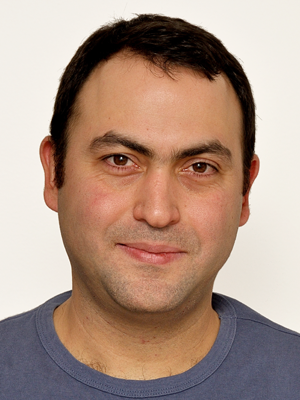PhD Amir Payberah
CONGRATULATIONS ON YOUR GRADUATION
Published Jul 17, 2013
Amir Payberah came to School of Information and Communication Technology in 2006 for master studies. He continued with PhD studies in large scale distributed systems and now he has defended his PhD thesis with the topic "Live Streaming in P2P and Hybrid P2P-Cloud Environments for the Open Internet".

Where are you from and where did you study before coming to KTH?
– I'm from Iran, where I studied for a bachelor's and a master's degree at Amirkabir University of Technology in Tehran. In 2006 I came to Sweden and started a new master's program in Software Engineering of Distributed Systems at KTH School of Information and Communication Technology.
What is your topic and why did you choose it?
– I'm studying large scale distributed systems, in particular live media streaming in peer-to-peer (P2P) overlay networks. One of the key points in P2P overlay networks is the absence of central decision points. I think it's quite interesting to have a system, such that its users themselves have control over the behavior of the system in a distributed manner, without depending on any central point.
Describe your topic in short.
– Live media streaming over the Internet is getting more popular every day. A popular solution to provide this service is the client-server model. In this model, all resources, for example storage and bandwidth, are located at the server side, and users have to connect to the servers to get the media. Youtube is a well-known system that works based on this model. However, providing a scalable and robust client-server model, such as Youtube, is very expensive, and very few companies can provide such a service at large scale. To me, this model represents capitalism, as the rich companies, who afford to buy expensive resources, can provide their services, while other companies do not have any chance to compete. An alternative to the client-server model is a P2P network, which represents socialism to me. In P2P networks, unlike the client-server model, resources are distributed among the users. Each user plays both client and server roles, by sharing its resources with other users, and also consumes other users' resources. Since in P2P networks each user contributes some resources, the capacity of the system grows by increasing the number of users. This model gives a chance to small companies to provide their services at a reasonable cost.
Tell us something about your results.
– In my thesis I used P2P overlay networks to provide live media streaming at large scale. However, using P2P in live streaming is not that easy and gives rise to a number of challenges that I tried to resolve in my thesis work.
What will the future bring for your research topic?
– Although the advantage of P2P overlay networks is their low cost, the availability of such networks is a concern. I think the future research area for P2P community is working on improving the availability of P2P systems by taking advantage of cloud computing environments. I believe the hybrid P2P-cloud architecture that provides high availability with low cost will be a new trend for the future research.
What are your plans for the furture?
– My plan is to do a postdoc here or in some research institute and afterwards go back to Iran.
You can find
the thesis by Amir H Payberah
here.

